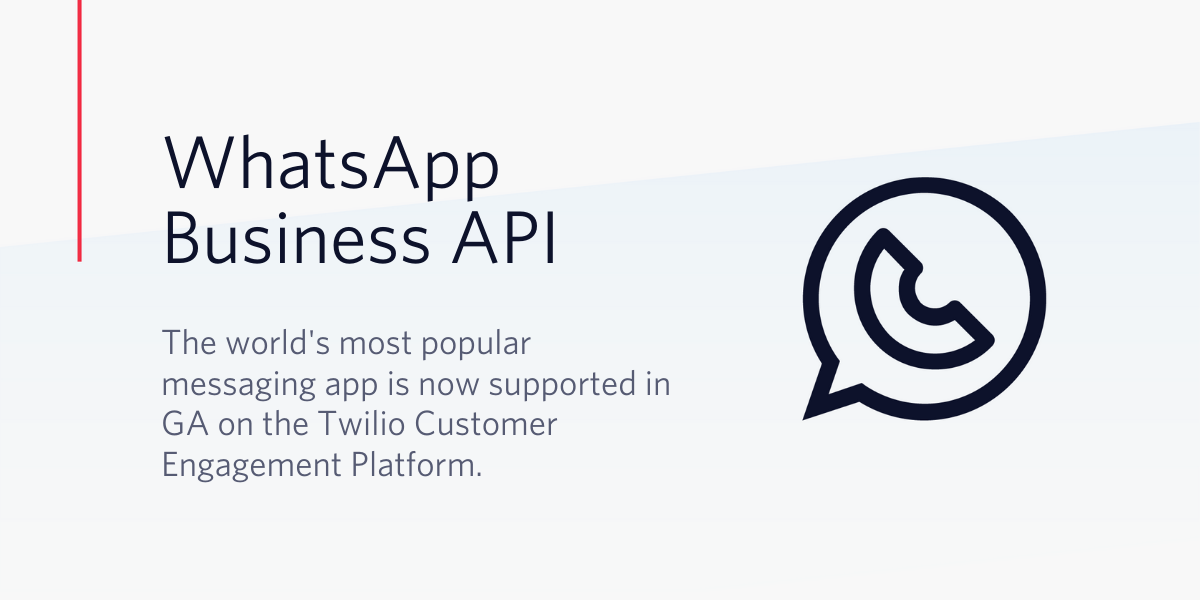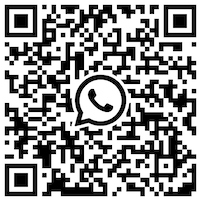200,000 developers and counting: the WhatsApp Business API on Twilio is now Generally Available
Time to read: 3 minutes

For even the most seasoned Twilio developer, the ability to reach more than 2B monthly active users on WhatsApp, with just a few lines of code, is close to magic. Today, we’re thrilled to share that support for the WhatsApp Business API is now Generally Available whether in Twilio Flex, the Twilio Conversations API, Twilio Programmable Messaging, or when using Twilio Runtime tools like Studio or the CLI.
Since launching support for WhatsApp on the Programmable Messaging API, more than 200,000 developers have started building on the platform. From customer support, to sales outreach, to supporting refugees, countless businesses and organizations have expanded to the WhatsApp Business API to take advantage of the higher consumer reach, deliverability, engagement rate, and rich messaging features.
There have also been a fair share of developer side projects like a WhatsApp-based digital jukebox, a bitcoin currency conversion bot, and a socially-distanced chess board, among countless others.
Bringing the WhatsApp Business API to Twilio's millions of developers initially focused on connectivity, simpler onboarding, and reducing the overhead burden of containerization. In addition to bringing the same reliability and uptime you expect from other Twilio products to the WhatsApp channel, we’ve also improved the developer and end-user experience with features to support scale, improve conversational messaging, and reduce development time.
Cloud scale for global messaging
Bringing a product to GA is no small feat. It requires hardening infrastructure, providing reliable product support, and supporting developers' high-volume production use cases. This all started with allowing businesses to bring their own numbers to Twilio to support WhatsApp use cases; you get the benefit of enabling your existing number with WhatsApp and access to Twilio’s API reliability and developer tools.
And while the majority of use cases on WhatsApp today are conversational in nature (more on that in a second), companies scaling their use of WhatsApp need to ensure messages are getting through to end-users in a reasonable amount of time. We delivered increased throughput earlier this year, allowing WhatsApp messages to be sent at a rate of 25 MPS with mechanisms in place to queue and send messages, in order, when that number is exceeded.
To provide increased transparency into message delivery and performance, we also expanded Messaging Insights to include delivery and engagement of messages sent on WhatsApp, including Read status. This means you can determine performance with a Status Callback URL via API, or from our easy-to-use visual dashboard.
More natural–and engaging–conversations
WhatsApp is naturally conversational – consumers often respond with a 👍or a full text reply. It also supports more rich features than the traditional SMS protocol, which limits you to text-based messages. To start the conversation, we offer every approved WhatsApp Business Account QR codes and short links (try this short link to see it in action with our WhatsApp-based bot) to promote your business and allow consumers to initiate the message exchange. With a quick scan, consumers are prompted to open WhatsApp and send an initial message to begin a Session, triggering a bot-based or agent-driven reply.

Since WhatsApp is being used for critical use cases, it’s important to know not just if a message has been delivered, but if it’s been read by the end-user. ‘Read’ status is supported in both the Conversations API and in Twilio Programmable Messaging, and is visible in Messaging Insights. Rather than guessing if a message was received and read, providing the consumer has not disabled this feature, you’ll be able to know, with confidence, that the end-user read your message. And this means that you can escalate to another channel, like a voice call, for critical messages.
We also released support for outbound location messages allowing you to deliver map-based locations in a message thread. With location messages, you can easily share a map of your retail or office location, allowing the consumer to click into their preferred maps application. There’s more to come in delivering an even more engaging message experience, but as each of these features rolls out, you’ll be able to use the exact same APIs.
Reduced development and improved privacy
Delivering new features is also about improving the developer and end-user experience. Critical to that experience is ensuring sensitive data is protected and consumers are only receiving wanted messages. As more and more businesses are turning to WhatsApp, developers expect the same Messaging Service features they rely on for SMS to just work on other channels. That’s why we’ve rolled out support for Phone Number and Message Body Redaction to WhatsApp. There’s less development work required, meaning you can get up and running faster, without jeopardizing security, and focus on building the experience that matters for your users.
Getting started with the WhatsApp Business API
It’s been a long journey to get to this point, and we’re appreciative of all of the developers who have provided feedback since we first launched support for the WhatsApp Business API. The creativity we’ve seen in developing new use cases for WhatsApp has been nothing short of awe-inspiring and we’re eager to release new features in the coming months.
If you’re just getting started with us on this journey, head over to the Docs for our best practices and quickstarts, or request access for your business.
We can’t wait to see what you build!
Related Posts
Related Resources
Twilio Docs
From APIs to SDKs to sample apps
API reference documentation, SDKs, helper libraries, quickstarts, and tutorials for your language and platform.
Resource Center
The latest ebooks, industry reports, and webinars
Learn from customer engagement experts to improve your own communication.
Ahoy
Twilio's developer community hub
Best practices, code samples, and inspiration to build communications and digital engagement experiences.